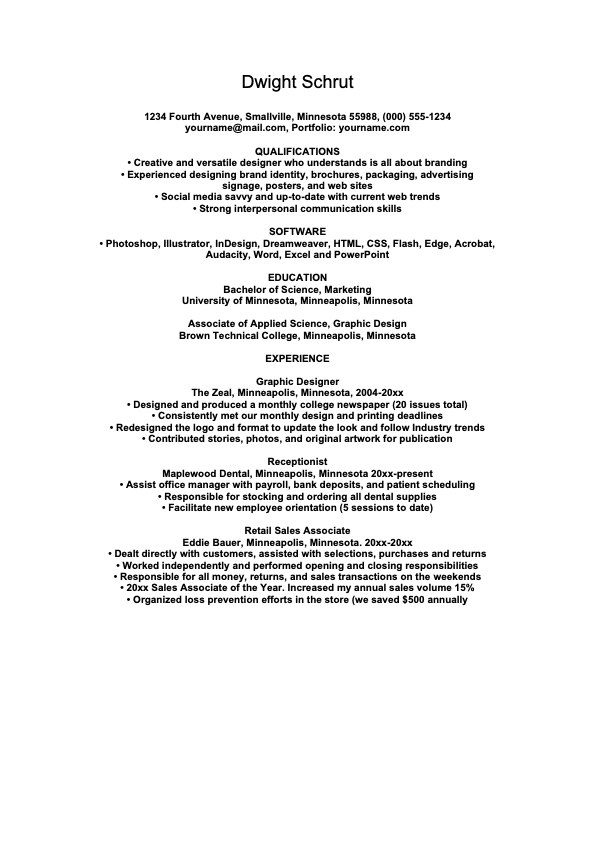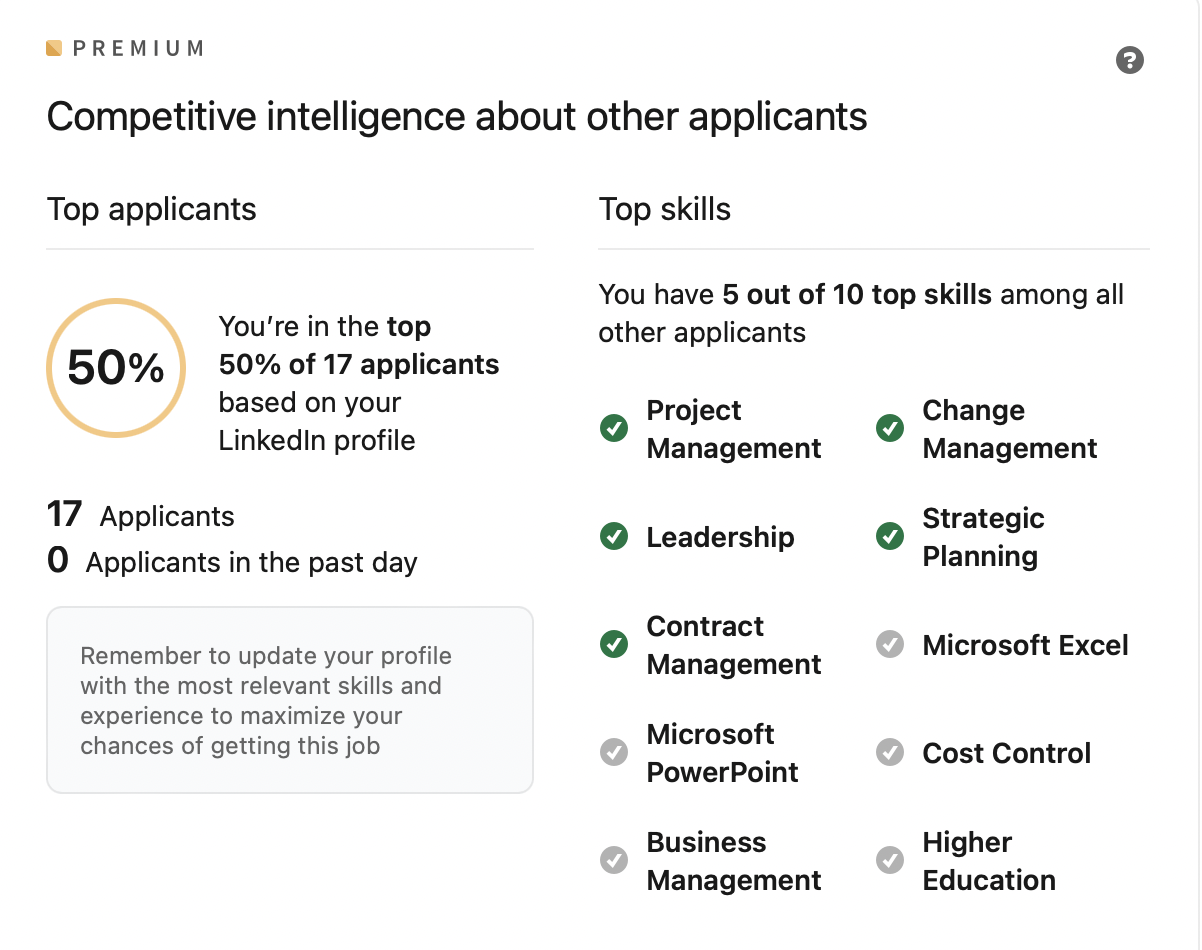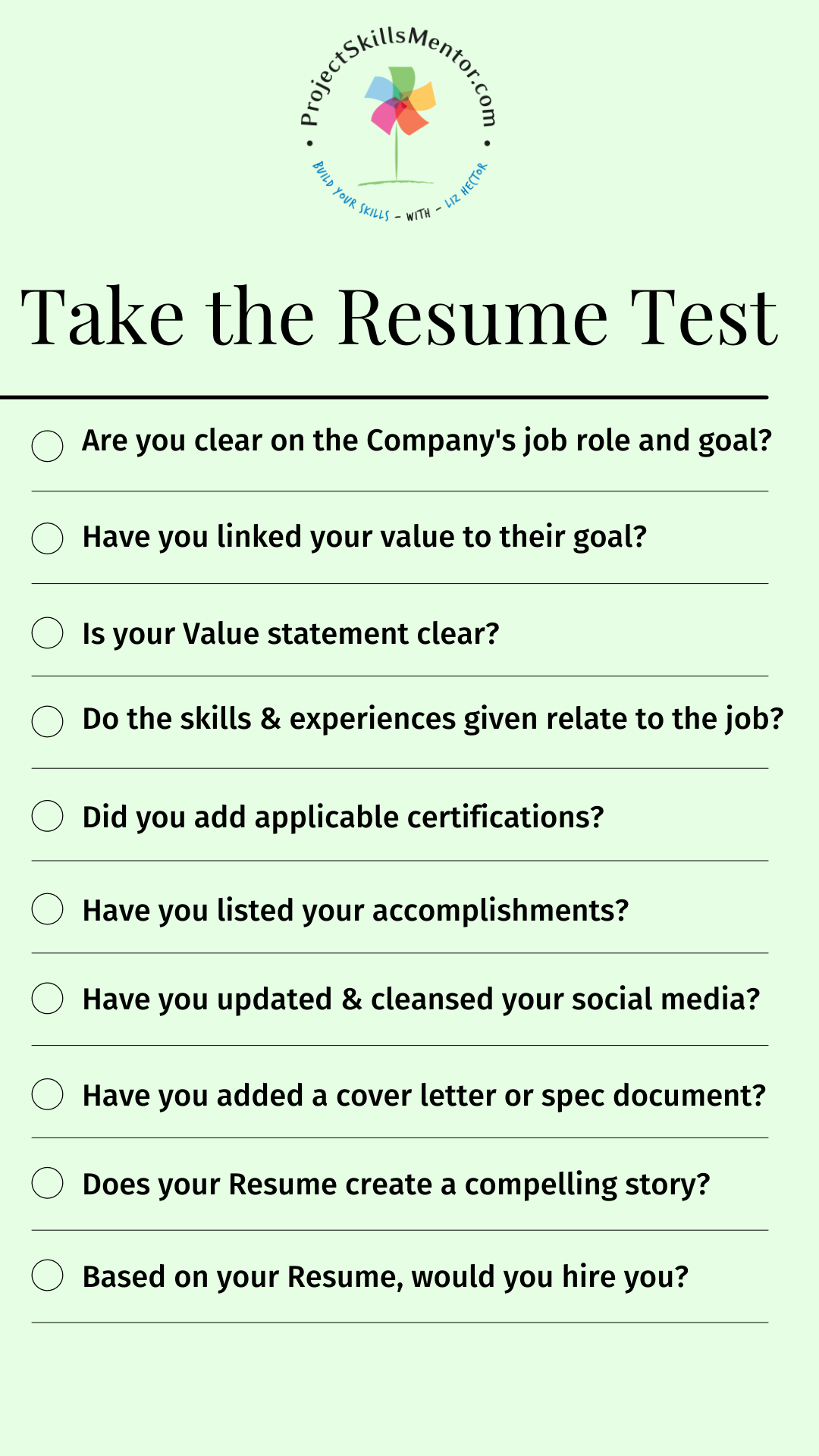How to write a Resume | Tips to help you get the job you want
Your Resume (also called a CV in Europe) is your brand - think of your Resume as You.INC - this is the moment to position who you are. Having the right Resume is part art and part science. You want to create a document to be proud of, which will get you the Job you want. Your Resume is the ultimate elevator pitch. This article takes you through practical steps and tips to make your Resume work for you.
As a hiring manager and mentor, I have reviewed many Resumes. Many I have reviewed are poorly put together, lack the details hiring managers want to see and provide the content needed to match skills in the open position. Resumes that don't hit the mark are quickly discarded. The use of keyword match tools means that human eyes never review many Resumes.
Creating an impactful Project Management Resume is an essential part of the job application process. In fact, everyone should have a current Resume since you never know when the opportunity will knock.
In this article, we'll review the steps to Resume creation, supply examples, and share practical tips to help you create the right Resume for you.
How to make a CV?
Start Strong with a Personal Profile - summarize your strengths
Focus on the Job - you are selling your abilities for the job you are applying for
Show Results - through your work history
Document Education and Certifications - show you can do it
Highlight Skills, Capabilities, and Awards - show you can go the extra mile
Show your Social side - people skills are important
Match your the presentation to the Job - show you know the market
See more on these steps below - with examples.
Great brand, no resume - no problem, Great Resume, no brand? Welcome to position #347 of the stake of five hundred equally great resumes.
- Michael Ellsberg, author of The Education of Millionaires
Whether you use a Resume or CV (i.e., Curriculum Vitae - Latin for 'the course of your life’), this document is critical to the first step in getting the job you want. Most likely, it is the first impression that your potential employer will have - and we all understand the importance of first impressions.
In any professional job, you will be expected to have a resume. Is yours to the Job of selling your skills, capabilities, and future potential? You don't have long to make an impression. So learn the steps to great resume writing and learn from the tips below.
A manager generally decides on a resume in 6 seconds.
- Ladders
How to write a Resume in 7 steps
1. Start Strong with a Personal Profile
The Person Profile or About you Summary is your chance to demonstrate your ability to communicate clearly, concisely, and compellingly. Give a sense of your goals and the value you bring to the prospective employer.
The goal is to set yourself apart by focusing on your personality: show enthusiasm and grit if these are part of who you are. Highlight social skills and business results by summarizing a key accomplishment. It may also be good to end with a link to these skills and the Job you are applying for. You want to summarize your strengths.
While some of this content may be shared in a cover letter, these documents are not always scanned into digital systems and may not reach your hiring manager? Be careful of cliche, but use words that tell your story and show who you are. Stay authentic to your goals.
I think it give it a little something extra, don’t you?
- Elle Woods, Legally Blonde
Tips for Personal Summary:
Make the reader curious. So be short and sharp.
Show the passion you have for the Job, role, and company you speak to".
Demonstrate your goal to have a career vs. a job, they will hire you for the Job, but this is the time to plant the seed that you are a future high potential.
Make it simple, but significant.
- Don Draper (Mad Men)
What do Good Resume’s do? They do these key things based on the job, industry and individual:
Stand out in form and function
Highlight Value statements
Link the potential job to their work
Build rapport with the reader
Show personality
2. Focus on the Job
You are selling your ability to land the Job you are applying for. Generic won't do. You should have a resume for every Job, but have a resume for every type of role.
Build the Resumes focus around the Job your are applying for. Use keywords from the Job posting to highlight skills, capabilities, and work you have done. This will help the hiring manager and HR department link you to the person they are looking for.
The organization often makes an effort to share its goals, requirements, and position experience expected. Do your best to be clear when you have done similar work. When you have something that could relate, show how it relates.
If you have a hobby or volunteer work related to the organization or some aspect of the Job, call it out and share why you think it is important.
Example: Hobbies
Mountain Climbing - My passion for this sport helps bring home the core objectives of your sporting company.
Bad Resumes
Good resumes stand out in different ways, but bad resumes have common features:
Are poorly laid out
Difficult to read
Wordy without a clear point of view
Do not link the applicant to the job
Over share, under inform
3. Show Results
Show your work and the results. Your Resume should list work experience from most recent to oldest. Name the Role, Company, relevant dates in the position, and work scope.
But your Resume is a highlight, not a duties list. So the first three bullets should include key accomplishments, targets met awards or other results. If you have managed staff, say how many and the types. If you have led an important workshop, share the level of participants and the outcome.
KPIs can be tricky. You may not be able to share certain information due to data privacy or non-disclosure agreements. Find an ethical way to share results using percentages or antidotes.
If you do use a specific KPI or metric for your accomplishments, be ready to support the details during the interview. If you speak about how the metric was formed and the impact of the outcome, you can share the result without sharing confidential details. Your ability to clearly share the KPI and the background to them helps to confirm your understanding of the work, contribution to it and the
Example: KPI’s
Following my design work on this project, the process showed a 10% improvement in customer response time.
Example: KPI supporting information for the interview
A current state baseline was compared three months after the new process was implemented. Antidotal information was also collected from the Customer Response team and was correlated to the metric results.
Remember that your Resume needs to match reality, not manufacture it. Work references and interview discussions that find your Resume has overstated your results, work or achievements can hurt you. Not just in that interview, but in the marketplace.
My rule of thumb is that 95% of what you talk about should be framed
as accomplishments
- Jane Heifetz, author of Right Resumes
Tips to Writing the Right Resume
Resume’s may be different, fit for the job role and company you are applying to. But the good ones all tick these boxes.
What are the critical success factors creating a resume that gets you the job you want? How can you use your resume to get the rest of the interview and job offer process up for success?
Follow these tips.
4.Document Education and Certifications
This is essential homework. It is necessary to show all education details above the high school level. Start level of highest education first, this information should include the school name, years attendees, if graduated, and the diploma received.
Some kinds of Job or industries may request your GPA (grade point average). If so, be sure to give accurate information that you can document. It is important to state attendance vs. graduation.
Remember never to overstate graduate levels, academic work, grades, or certifications. This information is generally easily confirmed, and even accidental errors can reflect badly on your integrity. Companies want to have confidence in their employee's ability to be truthful and accurate.
Project Management positions are often highly autonomous. Companies must trust your capabilities and abilities, attention to detail, and truthfulness.
Think like master carpenter Norm Abrams measures twice and cuts once. Read through your experience, education, and certifications, and then re-check the facts. Before you send your Resume is the time to make sure it is correct.
Another attribute that is key in some markets and locations is Language skills. If you speak more than two well. Document it, see the example for how graphics can demonstrate capabilities clearly and simply
Whatever the Job you are asked to do at whatever level, do a good job because your reputation is your Resume.
- Madeleine Albright
5.Highlight Skills, Capabilities, and Awards
Separate from education and certifications, your skills, capabilities, and award represent experience (and work-specific education). Awards can be broad and unrelated to the specific Job but can show a level of excellence.
Generally speaking, each of these attributes examples a different set of abilities that showcase a well-rounded employee and future promotable person.
Skills are things you can learn and could be tested on (sometimes known as hard skills).
Skills Example: MS Project, Outlook, and Javascript. Also, train Excel advanced skills to manager level staff.
Capabilities show the softer skills that allow you to do more objective work so can be put in the form of a statement.
Capabilities Example: Managed 3 Design Thinking workshops with Senior Executive level resulting in a new business process. Created the communications oversight committee for the Project Portfolio I ran.
In a related Resume section, we can also highlight hobbies and volunteer work. Unless they show another aspect of your capabilities, these should be kept focused on activities as they relate to your work.
Volunteer Example: Volunteer at local Animal Shelter, currently serving as Secretary since 2021. This role requires me to document all board meetings and work with local organizations to ensure aligned priorities.
6.Share your Social Side
Companies expect you to be on Social Media of some kind. Linked-In is commonly used to connect professionally and also host information that does not make it onto your Resume.
When starting your 'base Resume' (the generic version used for all other job role variations), check it against your Linked-In profile. Is your photo up to date? Is the online Summary consistent with your Resume? The details may not be the same (and generally, should not be). However, they need to agree. Don't say you have 10% results on your CV and 5% results on Linked-in, or give a different job title. The facts should always agree. If they don't, you may have to explain them during the interview (which will take the time you should be positioning yourself for the Job).
All online content should be reviewed. This may be a sensitive subject. After all, you want to be and should be authentically you. But in general, make sure that all sites are clean. If your grandmother wouldn't appreciate it, your future employees may not either.
Suppose you are serious about your job search. Consider investing in Linked-in premium. This access allows you to see who else is looking at the position and what the qualifications matches are.
If you see that your Linked-in profile shows a low match for work you have done, go back and update your file to rate higher using the keywords that Linked-in is searching for.
7. Match the presentation to the Job
Based on the industry and the job details, match your Resume to the kind of role you are looking for.
If it's a Tech job - Showcase skills and certified training
If it's a Design job - Use more visuals and icons
If it's a Strategy job - Consider showing some work on 'spec.'
You want to make your Resume attractive to the hiring manager. The more you show you understand the role, the more likely you will stand out in a stack of applicants.
How to use LinkedIn Premium for Job Search
It may be good to use LinkedIn Premium. Use this additional service to help you to understand the competition before sending in your resume. One of the best features is the top skills match. This shows how your LinkedIn profile keywords rank you to the job and the other applicants you have the skill listed, update your profile and check your skill ‘hits’ again, since many companies use this tool as well. LinkedIn Premium is an investment in yourself - it helps you get the right job, faster.
Differentiate Yourself by knowing your competition
Understanding who else has applied, where they are located, and they're unique selling points, can help you sharpen yours.
Don’t have a Master Degree, level up on your skills keyword match. Get certified in something (Microsoft and Google have online certifications). Or take a LinkedIn Test.
If opportunity doesn't knock, build a door.
- Milton Berle
Think beyond the Resume
Think two steps ahead
When creating your resume—plan for what might happen next.
Follow up from the Headhunter
Feedback from the Company
A follow up interview
A job offer
After the interview, you may get feedback.
Headhunter feedback may allow you to check the interview process. Ask how many others have interviewed for the job so far. Find out the next steps and timing.
If you get feedback from the hiring Company, use the moment to thank them for the interview. Ask if they have questions you can clarify from the interview. If you have to follow up questions, make them count. Focus on questions that help show your enthusiasm for the job and work.
If you get feedback after the process is complete on points to address. Listen carefully and consider how you can improve in your:
skills
communication
resume
Always use feedback as a moment to improve. Each time you get feedback, accept it as a gift. Honest feedback is often hard to give but so valuable to get.
Feedback is not personal — no one is asking you to change your personality.
- Marlo Lyons ,HBR, How to Ask for Feedback from an Interviewer
If you are asked for a second interview, ask about who the interview will be with. If relevant, prepare a example of work which demonstrates your skills. Make sure you don’t share real work done, but the show your ability to understand the work they need and your ability to do it. This will show you serious about the job and are able to do the work.
Prepare for a job offer. When reviewing the Job, research the job market. Assess job salary data to help you know the expected pay levels. Know your value in the local market before you get the offer.
Take the Test
The person with the best resume, doesn’t always get the job, but it can certainly help.
Take this test and score your ability to land the job you want.
Be honest with yourself and take feedback into consideration. Then review your resumes:
Message and Tone
Style and Formatting
Value driven Content
Competitive-edge
Completeness
Build your new Resume today
Use tech to build your resume and be more professional and able to pivot content during your job search.You have a few options. A tool like overleaf can help you create a code based, visually presented resume. Zipjob provides free tools and paid services to support you. LinkedIn allows you to structure a resume based on your profile. Fivver, is a document creation service, search “resume” or “CV” to find experts in your price range. Using a free version of Canva provides a variety of resume examples for you to modify with your own details.
I hope you found this information helpful, if you did, please let me know if you are currently looking for a job in the comments below and tell me what else you want to hear about. Thanks!
I also want to thank Altea Barbato, who contributed examples to this article.











